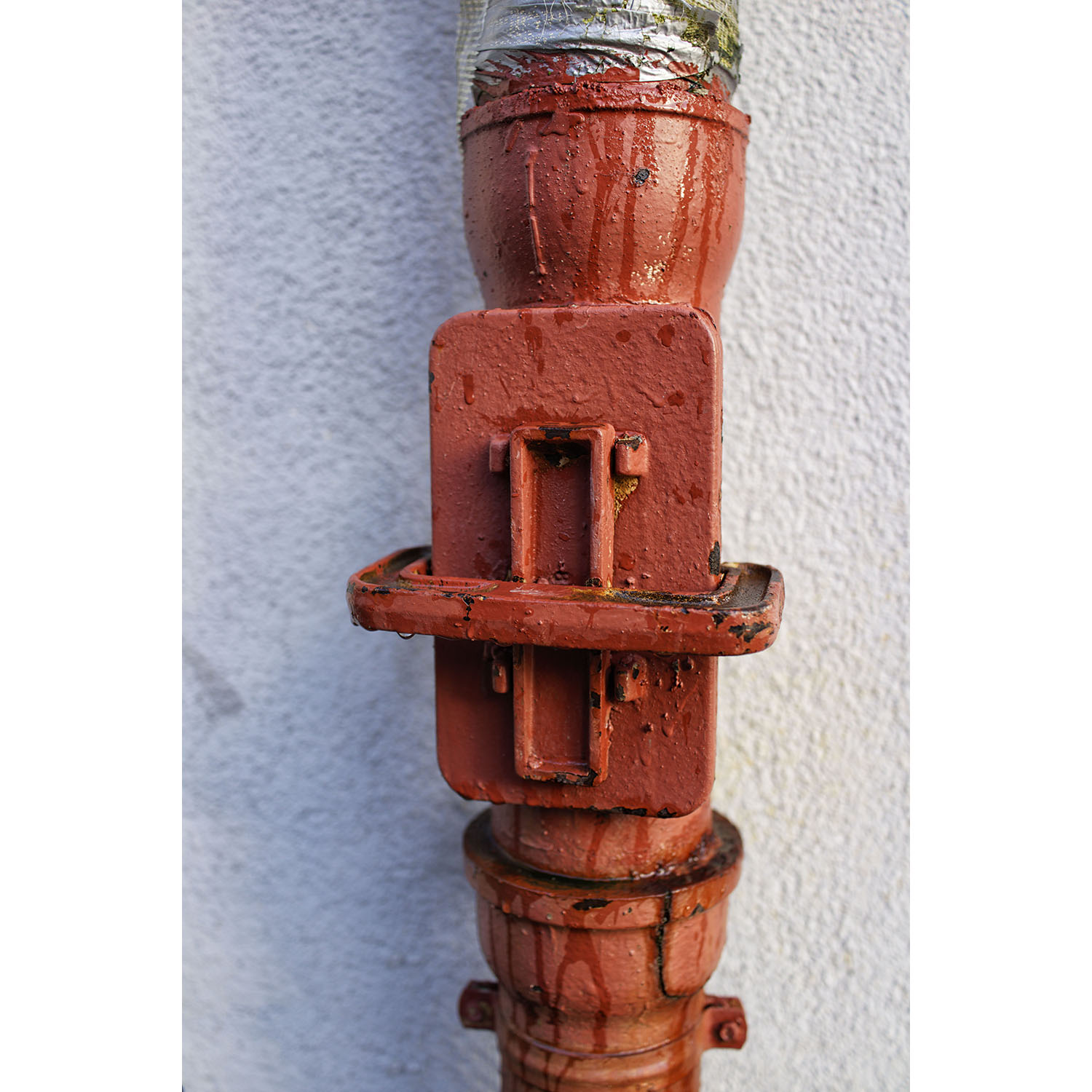Steven Seidenberg - Pipevalve: Berlin







Steven Seidenberg - Pipevalve: Berlin
Essays by Carolyn L. White and Peter R. Kalb
74 reproductions, 128 pages
13" x 11½"
In 2013, Steven Seidenberg encountered the pipevalves (in German,Reinigungsäffnung) depicted in this volume on daily walks around the neighborhood in which he was based during a residency in Berlin. He was hooked at once by their totemic quality, and he first photographed the two located on the same block as his studio. As he walked in and beyond the neighborhood he realized that the structures were concentrated within an area measuring just over .5 square km. Across most of Berlin, the cast-iron fittings photographed in this volume have largely disappeared—replaced by plastic and aluminum plates throughout the East Berlin neighborhoods where they were once prevalent. Pipevalve: Berlin consists of 74 photographs of a drainage pipe fitting followed by a series of aphorisms written by Seidenberg to accompany the images.
Seidenberg's richly detailed photographs capture materials endangered in the urban landscape—whether due to impermanence, ethereality, threat of replacement, or redevelopment. The images document objects and structures while offering a nuanced reading of a moment in the life of the object. The reading of his subject is enhanced through Seidenberg's interpretative vision rooted in the repetition of form, attention to details such as small bits of paint, splashes, tags, or trash pressed into crevices, and interest in unlikely groupings of texture, color, and character. Through shifts in depth of field, of scale, of angle of view, and other photographic effects, Pipevalve: Berlin exposes the enduring qualities of his subjects, while recording the impact of natural and human action on their form.
The repetitive presentation, formal consistency, and attention to the vernacular and mundane have come to signal the tradition of German serial work rooted in photography from August Sander to the Bechers and in conceptualist practices such as those of Hanne Darboven and Hans Haacke. Marking space and history like the former, time and labor like the latter, Seidenberg's photographs take part in a lineage that has shaped how we see urban space and visualized how we think about it
Two essays accompany the work. The first, by archaeologist and historic preservationist Carolyn L. White, situates Seidenberg's images and his accompanying prose as evidence of the material world of Berlin and as a kind of archaeological practice. Art historian Peter R. Kalb contextualizes the images within the trajectory of contemporary photography's interest in the microspaces of daily life while viewing them as a way of seeing and of experiencing a state of attention.